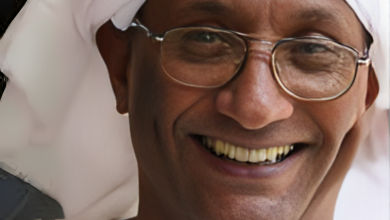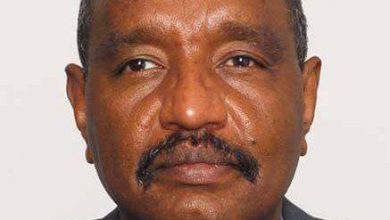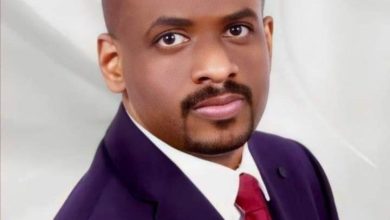When it is very dark, we miss “Save Darfur” (2004) (2-2)

Abdullah Ali Ibrahim
“If you want today, when Darfur is in this difficult situation, to see what the Save Darfur organization believes is working with it, you will find its website is still online, but, according to its people, it is not activated.”
The editor of the New York Times, author of the book “Artillery of Journalism” (1967), James Rustin, said that news is not something abstract except at the end point among its receivers, but in its area of origin it is relevant to sociology. That is, the news comes out to the world from the core of a social entity with the imprint on it from the relationships of a social entity. But these contexts are removed from the news as it reached the audience who replace it with another sociology, emanating from the sociology of those who hear it from the media.
And am not aware of any academic such as the Ugandan academic Mahmoud Mamdani who was able to handle this distinction between the news and the sociology when he debated the distinction between news and its sociology in his book “Saviors and Saved: Darfur, Politics, and the War on Terrorism” (2009). He subjected the quality of knowledge -about Darfur behind the activity of the American “Save Darfur” organization, which was established in 2004 to express solidarity with Darfur during its first catastrophe- to the test of the paradox between the news at its origin and the news in its endpoints among the audience. And you will find that he hitz the target, verily.
In his book, Mamdani approaches the Darfur issue close to what we saw Ruston do. He saw something similar after the gap between the incident in its venue and the places of its news between the worlds. The Darfur incident, which was concluded by the “Save Darfur” organization, was about an extermination struggle carried out by the Arab Janjaweed, supported by an Arab Islamic system, against the African groups, blackish in the local term, while Mamdani’s opinion was that, where it occurred, a dispute occurred between the owners of the Hakura (Land owned by people executively for them) and those who do not own it, regardless of race. Those who owned the Hawakir (homelands) in Darfur were both Africans and Arabs. Among those who abandoned it were Arabs and Africans as well. The conflict, in other words, is a conflict over resources between herders and farmers. It happens that the majority of herders are Arabs, even if their list is not devoid of Africans.
Journalist and filmmaker Julie Flint did not differ from Mamdani in her follow-up book, “The Other War: The Inter-Arab Wars in Darfur” (2010). The most important thing she came out with in her book is that the Arabs, who committed crimes against the Africans of Darfur in the service of the “Ingaz” regime until they were accused of “ethnic cleansing,” were fighting each other for a long time, fiercely, and bloodily. She added that these incidents of the “Dahiss and Ghabraa” of the pre-Islamic Arabs were left behind in their places, and did not reach the ears of the people of the news across the oceans, or they dropped them intentionally so as not to disturb the purity of the pure conflict between the Arabs and the Africans. This is the conflict that was behind the organization’s initial initiation of the campaign, according to Mamdani. The goal of “Save Darfur,” in his words, was to “Arabize” violence in the context of campaigns against terrorism, of which Arabs are its home, which are well underway. In its brightest aspects, he said, the Darfur Succour Campaign is a romanticism driven by a desire to satisfy a horrific humanity rushing to address a problem that troubles their conscience. At its worst, it is an elaborate activity, armed with journalism, designed to criminalize to the Arabs as a prideful group intoxicated by their race, determined to eradicate Africans entirely.
Mamdani described “Save Darfur” as a matter of matching their solidarity with the Africans of Darfur with the solidarity they previously had with the cause of the Africans of South Sudan. This has a far dimension. While it may be true to say that the confrontation in the south was between a central state dominated by Muslim Arabs, the conflict in Darfur was devoid of this pureness, as mentioned above. It is between Arabs and Arabs, Arabs and Africans, Africans and Africans, let alone that the Arabs of Darfur at that time did not have a stronghold among the Arabs of the ruling center in Khartoum. In addition, the southern war was a “rebellion” against the state, while Darfur is a civil war between settled farmers and herders dating back to the late 1980s.
Mamdani believes that the news about Darfur, which he called the “CNN effect,” obscured the context in which it occurred. In his words, the activists of “Save Darfur” combined an approach that belittles knowledge of what they are about to stand in solidarity with, with the pretext that it is enough for them to have good intentions in their practical activity for such solidarity. They cover themselves with their clothes without knowing the facts of the issue they rose up to stand in solidarity with, because close knowledge of it complicates the narrative with abundant details that cover up the bleeding wounds of a plight like Darfur. On the other hand, they rely on the evidence they see with the naked eye and avoid addressing the context of what they see to avoid blindness. The pictures of the bleeding wounds of Darfur and the interviews with the victims they met are the ones that speak to them alone, which opened their entire movement to what he called the “CNN effect,” that is, the news prevailing over everything else, as mentioned above. “Save Darfur” activists grew up to trust the image more than everything else, although it must be asked about its content, and that will have its time later. The bottom line is that they strip the news of Darfur and the “pornography of violence” throughout it from context. They are like someone who substitutes moral confidence for more reliable knowledge with the sociology of his experience.
Mamdani said that it was the norm that whenever an issue such as Darfur came up to him (and he had previously written about ethnic cleansing in Rwanda), he investigated its genealogy to find out from what context it came into existence: how this context helps us in blurring our knowledge of it, or in unknotting its implications. He said that this is what led him over time to make his discussions take on a historical nature because history is an inescapable context for understanding the incident wherever it occurred.
It seems that the news is a summer cloud that will soon dissipate. If you want today, when Darfur is in this difficult situation, to see what the Save Darfur organization believes is working with it, you will find its website still on the Internet, but, according to its people, it is inactive. While the incident remained, the news dissipated. This is another sociology about those who went on strike this time to save Darfur.
I once wrote about the cruelty of the scholars’ imposing repentance to the students of Ustaz Mahmoud Mohammed Taha, saying that the Almighty must reside in a world that these scholars have left for immorality. This is a scene from Al Geneina Atmour (sand hill) from which the Lord disappeared.



